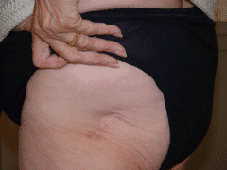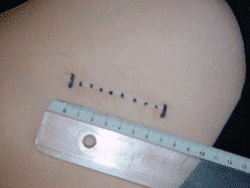
Minimal invasive surgery
For 20 years, the generalization of arthroscopic techniques in orthopedic surgery (meniscectomy, cruciate ligament reconstruction, rotator cuff repair, etc.) has enabled assessment of their role in patients’ postoperative recovery.
In addition to reducing or eliminating scar tissue, minimal invasive surgery diminish postoperative pain, ease rehabilitation, and improve functional recovery, while ensuring reconstruction quality equivalent to that achieved with open surgery.
Surgeons now apply these minimally invasive techniques for major surgery like prosthetic joint replacement, and their development for use in hip replacement surgery began in 2000. By improving prosthesis placement ancillaries, surgical approaches, and operational techniques, we managed to gradually reduce incision lengths (no matter the surgical approach) and surgical trauma, while maintaining implantation quality and prosthesis accuracy.
The standard 15 to 20cm incision has been reduced to a 6 to 7cm incision on normal-sized patients. I have used these techniques since 2004. Mini-invasive surgery reduces hospitalization time, and crutches are no longer needed 2 weeks after surgery.
Although the reduced incision length is less impressive for full knee replacement surgery, specific ancillaries have been developed for single compartment prostheses so as to reduce incision size and avoid almost any access at the level of the quadriceps or extensor system.
These minimally invasive techniques along with their advantages have been validated meanwhile for the first postoperative months, even though their 1-year results equate those of standard surgery. Nevertheless, these procedures are now considered reliable and standardized surgical techniques.


